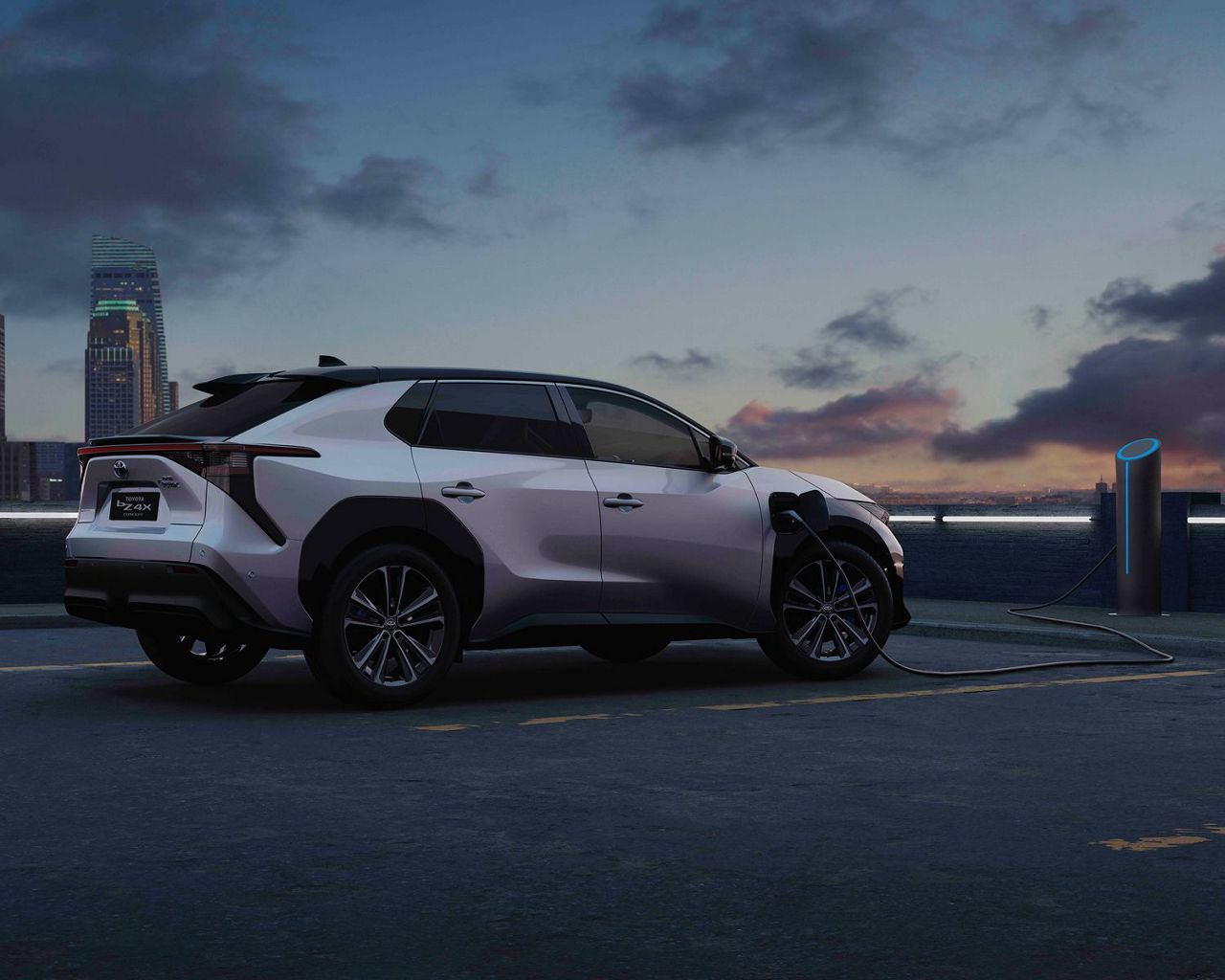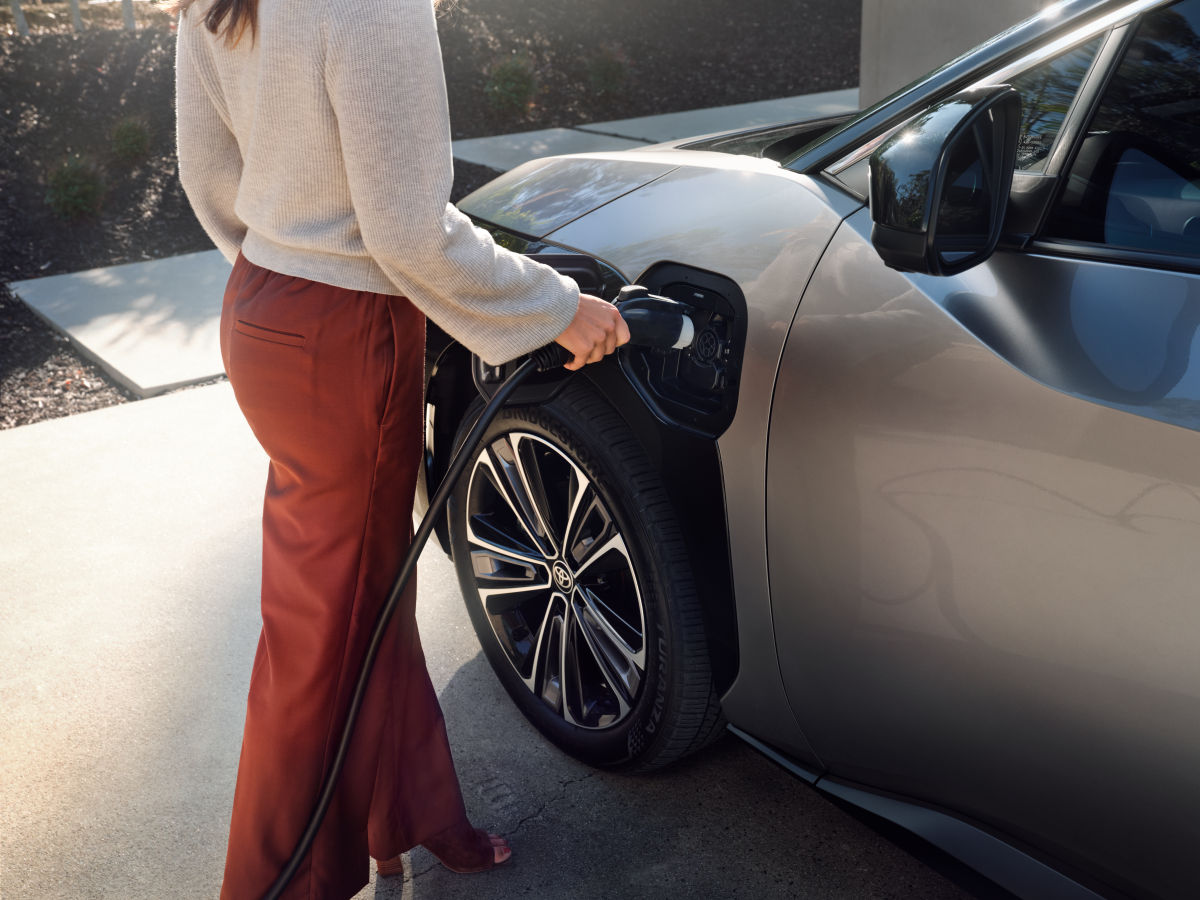Select a province & language
Entrance to this website assumes you have read and agree to these Legal Terms and Conditions and the Privacy Policy.
Entrance to this website assumes you have read and agree to these Legal Terms and Conditions and the Privacy Policy.
Charging an electric vehicle is a simple process, but understanding key concepts can make the process safer, faster, and more cost-effective. Whether you’re charging at home, at work, or at a public charging station, understanding how EV charging works will help you get the most out of your vehicle. This guide covers everything you need to know from charging types and speeds to maximizing the efficiency and cost-effectiveness of your charging routine, so your EV is always ready to go when you are.

The first thing to know is that there are three levels of charging, or three types of charging points, each offering a different speed of charge measured in kilowatts per hour (kWh). Here's an overview of charging times depending on the different levels of EV charging.
Level 1 is the slowest way to charge, though in some ways, the most convenient, perfect for drivers with short commutes. All you need is a standard 120-volt AC (Alternating Current) household outlet. On average, Level 1 charging can deliver between 3-6 kW of charge per hour. Or, measured another way, enough electricity to provide about 6-8 kilometers of driving range per hour of charging. However, this can also be dependent on the size of the battery. For example, with the new Toyota bZ, it can take 50 hours [1] or even more to reach the recommended charge. No additional special equipment is required.
Level 2 chargers use a 240-volt AC outlet, the same amount of power used by bigger appliances in your home like a stove or HVAC equipment, and can charge an electric vehicle 7 times faster than a Level 1 charger. On average, Level 2 chargers deliver between 7-22 kW of charge per hour, or between 45-60 kilometers of driving range per hour of charging. Again, depending on battery size and other factors, it can take anywhere between 4-6 hours for a typical EV to reach the recommended charge with a Level 2 charger. You can find Level 2 chargers at most public charging stations. Many EV owners also choose to have one installed at home for faster charging. (More on this in just a bit.)
Level 3 chargers, known as Fast or Rapid Chargers, use DC (Direct Current) at 480-volts. These are the fastest charging options on the go, letting capable EVs like the new Toyota bZ electric SUV charge in as little as 28 minutes [3]. Level 3 chargers can be found at some public charging stations. It is also important to bear in mind, that not every electric vehicle can accept Level 3 charging.

Other factors that can influence charging times include battery size, how empty or full the battery is at the start of charging, HVAC & accessory usage, the vehicle’s maximum charging rate, and even outside temperatures.
Many EV owners choose to install a Level 2 Charger at their residence. There are a number of factors you should consider before installation, such as: the best location, the type of connector, the length of cord, permanent or portable installation, and appropriate amperage.
Depending on the age of your home, the wiring may need to be upgraded. It’s even possible that the electrical panel may need to be replaced. For these reasons and more, it is highly recommended that you consult with a certified installer about requirements and costs.
The cost of installing an electric vehicle charger at home can vary based on several factors; however, many provinces and municipalities offer rebates or incentives for the purchase and installation of a home charger and installation.
Knowing when to charge your electric vehicle can help you save money and keep your battery healthy in the long run. While you can plug in anytime, being strategic about charging makes a big difference. Setting up a charging schedule during off-peak hours when electricity demand is lower can significantly reduce your EV charging costs.
Wondering how much you should charge your electric vehicle for the best results? Cost isn’t the only factor as EV charging habits directly affect battery health. While overnight charging is convenient, it’s recommended to avoid a full 100% charge unless you need the maximum driving range. For everyday use, the best EV charging practice is to keep your battery between 20% and 80%, this range helps battery health and overall lifespan. Following these EV charging tips will not only help you save money but also keep your electric car battery running at its best for years to come.
The cost to charge an EV depends on several factors:
How far you can travel on a full charge depends on the vehicle. Each model has a different EV range, battery size and efficiency. The perfect electric car for you will be the one you can use for your normal journeys.
Modern electric cars and SUVs offer a significant range between charges. Toyota’s bZ AWD, for example, has an estimated range of up to 460km for front wheel drive models on a full charge and under ideal conditions [3]. With a growing network of EV charging stations across Canada, it is pretty easy to re-charge along the way.

There are more than 5,000 public charging stations in Canada, and that network continues to expand with more stations supporting Level 3 charging. You can find the closest public charging station through the Transport Canada, ChargePoint websites, as well as the Toyota App.
These are some of the key pieces of information you may need and want to know to start charging ahead. Remember, if you are not yet ready to commit to a full battery electric vehicle and the lifestyle changes it can require, Toyota also offers a range of Hybrid Electric (HEV), Plug-in Hybrid Electric (PHEV) and Hydrogen Fuel Cell Electric (FCEV) vehicles, that help reduce fuel costs and greenhouse gas emissions. Check them all out here.
Disclaimers
[1] Charge times are estimates only and can vary significantly based on numerous factors including external air temperatures (extreme heat or colder temperatures). This information is intended for comparison purposes only, and is not specific to any individual vehicle. Always plug-in/charge vehicle in accordance with Owner’s Manual. Range attainable per minute/hour of charging will vary significantly depending on speed, outside temperature, accessory use, how/where you drive.
[2] Charge times are estimates only and can vary significantly based on numerous factors including external air temperatures (colder temperatures or extreme heat), charger type/condition, accessory use, and battery level and condition. DC charging times should be limited to three sessions per day, regardless of external air temperatures). After three 10-80% charge sessions, DC Fast Charging over the next 24 hr period may take longer and be less effective. Public charging experience will vary based on charger type and charger specifications (Level 2 or DC Fast Charger with 150 KW or above) and other factors including vehicle and environmental conditions. Charging times can also vary depending on the actual charging rate realized by the charging station, which can be highly variable and often below the maximum stated rate of charge. This information is intended for comparison purposes only, and is not specific to any individual vehicle. Toyota does not own or operate public charging stations and is not responsible for their availability or performance. Always plug-in/charge vehicle in accordance with Owner’s Manual.
[3] Toyota-estimated 460km total driving range for 2026 bZ XLE AWD based on Government of Canada approved test methods when vehicle is fully charged (100%) and operated under ideal driving conditions and at external air temperature generally between 20-30 degrees Celsius. This information is intended for comparison purposes only, and is not specific to any individual vehicle. In sub-ideal conditions, actual range will decrease significantly depending on driving and charging habits, driving speed, outside temperature, weather, accessory use, how/where you drive, cargo load, vehicle and road condition, and other factors. Battery capacity also decreases with time and use which will reduce range. See Owner’s Manual for details.
.